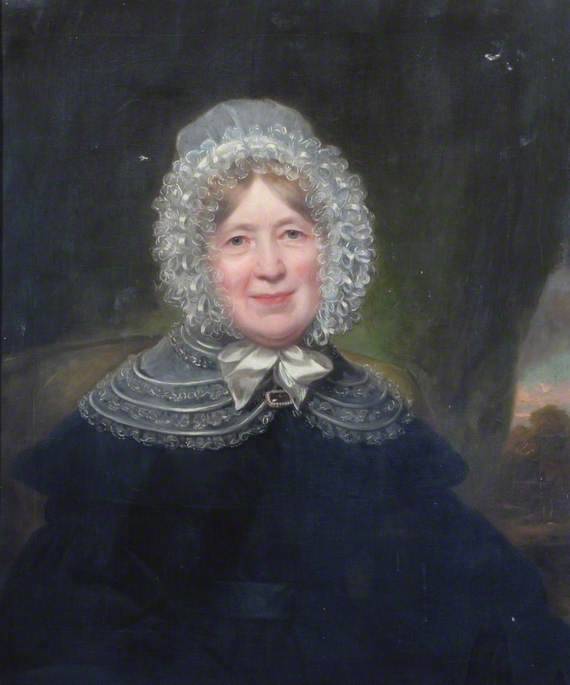#art museums
May 6, 1935 – FDR creates Works Progress Administration (WPA)
“On this day in 1935, President Franklin D. Roosevelt signs an executive order creating the Works Progress Administration (WPA). The WPA was just one of many Great Depression relief programs created under the auspices of the Emergency Relief Appropriations Act, which Roosevelt had signed the month before. The WPA, the Public Works Administration (PWA) and other federal assistance programs put unemployed Americans to work in return for temporary financial assistance. Out of the 10 million jobless men in the United States in 1935, 3 million were helped by WPA jobs alone.While FDR believed in the elementary principles of justice and fairness, he also expressed disdain for doling out welfare to otherwise able workers. So, in return for monetary aid, WPA workers built highways, schools, hospitals, airports and playgrounds. They restored theaters–such as the Dock Street Theater in Charleston, S.C.–and built the ski lodge at Oregon’s Mt. Hood. The WPA also put actors, writers and other creative arts professionals back to work by sponsoring federally funded plays, art projects, such as murals on public buildings, and literary publications. FDR safeguarded private enterprise from competition with WPA projects by including a provision in the act that placed wage and price controls on federally funded products or services.Opponents of the New Deal in Congress gradually pared back WPA appropriations in the years leading up to World War II. By 1940, the economy was roaring back to life with a surge in defense-industry production and, in 1943, Congress suspended many of the programs under the ERA Act, including the WPA.“|
-History.com
This week in History:
May 3, 1952 First aircraft lands at North Pole
May 4, 1965 Willie Mays breaks National League home run record
May 5, 1961 Alan Shepard becomes first American in space
May 6, 1940 John Steinbeck wins Pulitzer for The Grapes of Wrath
May 7, 1994 Munch’s The Scream recovered after theft
May 8, 1945 V-E Day is celebrated in America and Britain
May 9, 1914 Woodrow Wilson proclaims first Mother’s Day holiday
Thisprint by Paul Kucharyson can be found in the online collection of The Columbus Museum.
Post link
March 6, 1986 - Georgia O'Keeffe dies
“Georgia O’Keeffe, the artist who gained worldwide fame for her austere minimalist paintings of the American southwest, dies in Santa Fe at the age of 98.
Born in Sun Prairie, Wisconsin, in 1887, O’Keeffe grew up in Virginia and first studied painting at the Art Institute of Chicago. Initially, she embraced a highly abstracted, urban style of art. She later moved to New York where she thrived within the growing community of abstract expressionists. Beginning in 1912, though, she began spending time in Texas and she became the head of the art department at the West Texas State Normal College in 1916. O’Keeffe’s time in Texas sparked her enduring fascination with the stark and powerful western landscape. She began to paint more representational images that drew on the natural forms of the canyons and plains that surrounded her. O’Keeffe’s paintings of cow skulls and calla lilies gained particular attention and won her an enthusiastic audience.
Her marriage to the New York art dealer and photographer Alfred Stieglitz brought O’Keeffe back to the northeast. For a decade, she divided her time between New York City and the couple’s home in Lake George, New York. In 1919, O’Keeffe made a brief visit to the small New Mexican village of Taos, and she returned for a longer stay in 1929. Attracted to the clear desert light and snow-capped mountains, she began returning to New Mexico every summer to paint. O’Keeffe found a vibrant and supportive community among the artists that had been flocking to Taos and Santa Fe since the 1890s.
After Stieglitz died in 1949, O’Keeffe permanently relocated to Abiquiu, New Mexico. There she continued to produce her hauntingly simple images of the southwestern land she loved. By the time she died in 1986, O’Keeffe was considered one of the preeminent artists of the American West and had inspired legions of imitators.”
This week in History:
March 3, 1931 - “The Star-Spangled Banner” becomes official national anthem
March 4, 1789 - Government under the US Constitution begins
March 5, 1963 - Hula-Hoop patented
March 6, 1820 - Monroe signs the Missouri Compromise
March 7, 1876 - Alexander Graham Bell patents the telephone
March 8, 1950 - VW bus goes into production
March 9, 1959 - Barbie makes her debut
New Mexican Landscape by Georgia O'Keeffe can be found in the online collection of Springfield Museums.
Post link
Paris Bucket List: Six Sights
1. Arc de Triomphe
2. The Louvre
3. Orsay Museum
4. Notre Dame Cathedral
5. The Eiffel Tower
6. Sacré-Cœur Basilica
Post link
sup besties i did not get the job i interviewed for because wait for it.. someone had experience and i didn’t so they gave it to them instead of me. i would like to jump off a bridge now
but this has brought me back to my only applying to art museums bullshit. so if you work at an art museum and would like to hire me let me know okay bye

Elizabeth Hodgson (d.1859), Breckamore unknown artist

‘The prayer’ (La prière) Jean-Baptiste Greuze (1725–1805)

Homeward Bound, Glenlochy A. Denovan Adams (active 1870s)

Two Girls Consulting a Gipsy Fortune-Teller; British (English) School

Two of the Four Seasons: Spring by Jacob de Wit (1695–1754)

A Baby Offered up to Heaven by its Guardian Angel British School









